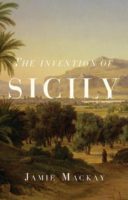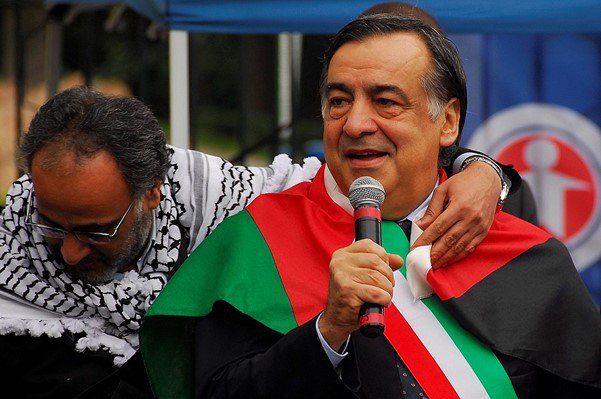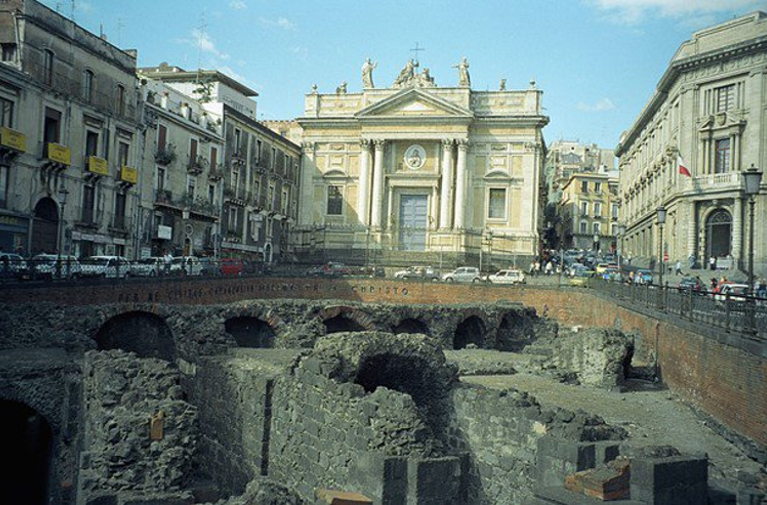 “All of Sicily is a dimension of the imagination,” wrote the novelist Leonardo Sciascia. Indeed, the island has always emanated a slightly mythical air, neither quite real, nor quite imaginary, like a kind of Mediterranean Shangri-La. Its complex, multi-faceted history fascinated travellers from Plato to DH Lawrence. Many books about Sicily are less about the island itself than about one’s perception of it, whether as the romanticised image of the noble brigand or a guttural tale of corruption and violence. Like an anamorphic painting, the island seems to change form depending on which way you look at it.
“All of Sicily is a dimension of the imagination,” wrote the novelist Leonardo Sciascia. Indeed, the island has always emanated a slightly mythical air, neither quite real, nor quite imaginary, like a kind of Mediterranean Shangri-La. Its complex, multi-faceted history fascinated travellers from Plato to DH Lawrence. Many books about Sicily are less about the island itself than about one’s perception of it, whether as the romanticised image of the noble brigand or a guttural tale of corruption and violence. Like an anamorphic painting, the island seems to change form depending on which way you look at it.
‘The Invention of Sicily’, by Italy-based, British writer Jamie Mackay, does ground us in reality. Yes, this is a real place. But there is something special here, too. The early chapters are a rundown of the island’s history. Sicily was first colonised by the Greeks, then the Romans, then the Arabs, whose influence was so great that by the time the Normans took over in 1072, most of the island’s population was Muslim. Afterwards, Sicily was ruled intermittently by various Spanish monarchs until 1860, when Garibaldi’s heroics saw it incorporated into the new Kingdom of Italy.
The overarching image is that of Sicily as a kind of hunter’s stew, with each newcomer peppering the pot with their own unique ingredients. Far from supplanting each other, each new ruler sought – for their own particular reasons – to augment what had come previously. Some of the best early chapters concern the rule of the Normans, whose kaleidoscopic tastes led to the fusion of Norman, Arabic and Byzantine culture – an epiphany of pre-nation state cosmopolitanism that manifested itself in the island’s politics, folklore, religion and architecture.

View of the Roman amphitheater and the church of Sant’Agata alla Fornace in Catania | Wikicommons/ Jerzy Strzelecki. Some rights reserved.
Mackay describes the Cathedral of Monreale, constructed in this period, as
“an interaction of elements so complex that art historians continue to disagree as to which specific styles might be attributed to which cultural traditions…a dizzying array of influences synthesised into a harmonious design”.
And having seen the cathedral in person, I can confirm that the results are just as beguiling as described.
The island was a melting pot of experiments. Catholicism flirted with paganism, Byzantine traditions morphed into Arab and Norman expressionism. A large Jewish community contributed greatly to the island’s culture, before their expulsion by the Spanish. There are references to Sicilian King Arthurs, witches, bandits and miracles. The word ‘esoteric’ is used more than once. This mix of the mundane and the metaphysical features in the first part of the book, while later chapters focus on the radical politics on the island, the emergence of a distinct Sicilian literary and film culture, and the arcane origins of the Mafia. It’s no wonder that many later Italian politicians saw the island as something of an anomaly and struggled to figure out what to do with it.
History, politics and culture
It’s an impressive achievement condensing such a vast array of history, politics and culture, into such a slim and readable book, and it’s a testament to Mackay’s unpretentious writing style that it never feels overwhelming or didactic.
Mackay is also an excellent and pithy describer of places. Who would not want to visit the Arab-Norman villas of Palermo or the souk-like markets of Marsala? Even sombre descriptions of Catania – Sicily’s much-neglected second city – are oddly alluring. The book is not a travelogue, but it will make you want to travel.
There are fascinating accounts of the Risorgimento period, under which the island was haphazardly incorporated into Italy. Northern politicians viewed this ‘mongrel island’ with disdain, while the Sicilians, too, viewed their new country with a sense of scepticism. The island, at various points in the modern era, has been independent, quasi-independent or on the verge of independence, most recently in the turbulent post-WW2 years. It’s not hard to imagine how, if things were only a fraction different, Sicily would be an independent country today.

Palermo’s mayor, Leoluca Orlando | Wikicommons/ Rino Porrovecchio. Some rights reserved
But there are also moments that confound prejudices. Who would have thought that Italy’s first LGBT rights organisation was founded – not in Milan or Bologna – but in Palermo in 1980? And there’s an intriguing account of Mussolini’s relationship with the Mafia where it is suggested that the dictator came closer to eradicating the organisation than any Italian leader before or since.
In the final epilogue, it’s ordinary Sicilians themselves who are given space to shine, notably in their anti-Mafia activities, their resilience and creativity and especially in their magnanimous response to the ongoing refugee crisis, which contrasts sharply with the hysteria, xenophobia and wall-building of other European societies.
A figure of hope emerges in Palermo mayor Leoluca Orlando, whose comments on migration suggest that the unrelenting charity and humanism Sicilians have shown is deeply rooted in their unique history, culture and identity. Maybe it’s not so bad to be an anomaly after all.
‘The Invention of Sicily’ by Jamie Mackay is published by Verso





